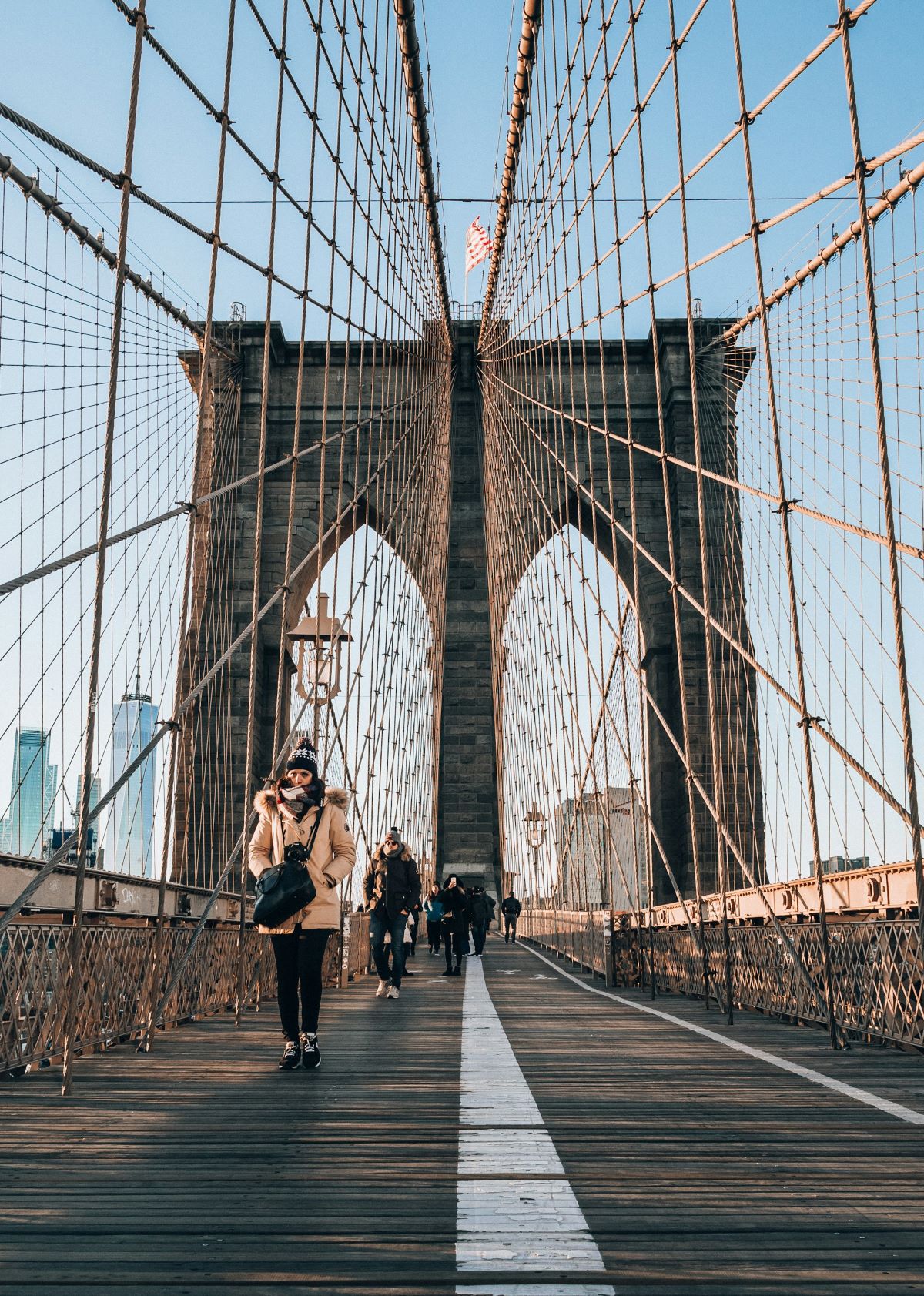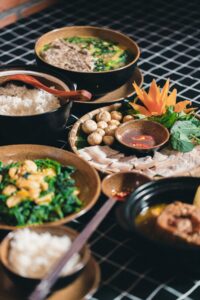Last Updated on March 26, 2025 by Maika Cotton | Published: April 30, 2024
The Empire State Building, MoMA, Times Square, the Statue of Liberty, Greenwich Village, the Metropolitan Museum of Art, the Brooklyn Bridge, the American Museum of Natural History. These are but a few of places visitors check off a list when in New York City for the first or second or even third time.
But if you’ve seen the “greatest hits” of Gotham, there are other sites to be seen, places that you may or may not find buried in the backpages of a guidebook, places that some locals may or may not know about, places you’ll feel rewarded that you actually found them.
Here are eight great hidden gems in New York to seek out on your next trip.

Visit Hart Island, the Isle of the Dead
Ask a New Yorker if they know how to get to Hart Island and you might get a shrug of a response. Hart Island, located on the western end of Long Island Sound, wedged between the Bronx and Queens, was (and, generally still is) forbidden to visit. That’s because since the end of the American Civil War, it’s been used as a cemetery, first for Civil War veterans and then as a potter’s field for mass burials.
The city began burying the bodies of people whose families failed to claim them, as well as, the homeless and indigent, on Hart Island after the Civil War and only stopped in 2021.
Over all, there are a million bodies beneath the ground on this island that is one mile long and one-third mile wide. In 2023, the New York City Parks and Recreation department began offering twice-monthly guided tours of this fascinating off-the-radar island.
To visit, you have to be lucky:
- Register on the Parks and Rec website to be entered into a lottery for a place.
- Good luck!

Uncover Yeshe Nyingpo, a disguised Tibetan Monastery
The townhouse at 19 W. 16th Street is hiding something. The three-floor red-brick facade looks just like all the other historic townhouses on this Chelsea block. But enter through the front door and you’ll suddenly be in a Tibetan Buddhist monastery.
Welcome to Yeshe Nyingpo, a monastery established in 1976 by His Holiness Dudjom Jigdral Yeshe Dorje Rinpoche. Inside there is a high-ceilinged temple room for meditation, reverence, and contemplation. You might also see a modest throne that only the Dalai Lama can sit on when he visits New York City.

See Big Apple artifacts at the City Reliquary
This small Williamsburg, Brooklyn city museum began life in 2002 when Dave Herman began displaying his collection of curious New York City detritus and minutiae (or, as he might call them, “relics”) from his Williamsburg apartment.
Eventually, he rented a space around the corner, the former home of a bodega, and today this small but fascinating museum houses some fun artifacts of the city.
Imagine: a burned out lightbulb from the Statue of Liberty’s crown, a hunk of stone that fell off of the Flatiron Building, and a turnstile from the old Ebbets Field, home of the Brooklyn Dodgers. These are just a few of the things you’ll find at the fascinating City Reliquary.

Explore the museum at Eldridge Street
Located in the historic Eldridge Street Synagogue, the Museum at Eldridge Street tells the story of the Lower East Side Jewish community that was established here along with the mass migrations of Jews from Central and Eastern Europe. The synagogue itself, built in 1887, was one of the first of its kind in the United States, founded by Ashkenazi Jews.
Visitors are welcome to do self-guided tours but there are also guided tours of the museum and synagogue, so be sure to check out their website for specifics.

Tuck into the Koryo Saram cuisine scene
To get to the part where you’re sitting in a restaurant deep into Brooklyn tucking into a bowl of kimchi-laden noodles, we have to travel thousands of miles and a couple of hundred years back. Let’s start in Korea where tens of thousands of people immigrated to eastern Russia in the hope of a better life. In 1937, though, Josef Stalin had other plans for them.
Fearing that they were duplicitous to Imperial Japan, Stalin sent 200,000 Koreans (and Korean-Russians) on trains to Central Asia—particularly Soviet satellite countries, Uzbekistan and Kazakhstan.
In the 1970s, when there was a mass migration of minorities out of the Soviet Union, many of these Korean-Russians, called Koryo Sarams, migrated to the United States, especially to Brooklyn. And they brought their food with them, fortunately.
Koryo Saram cuisine is:
- As you’d expect, a mash-up of Korean and Russian and Central Asian fare that was born out of the larger forces of history that we cannot control.
- And you’re unlikely to find the cuisine anywhere in the United States except in Brooklyn.
- At restaurants such as Cafe Lily (Avenue O, 42) in Bensonhurst, Brooklyn you’ll get juicy lamb-stuffed dumplings, tender grilled kebabs, a sweet-and-sour carrot salad, and variations on the theme of noodles and kimchi.

Sing show tunes at Marie’s Crisis
Want to go to a fun bar in Greenwich Village? Do you like history? Do you like show tunes?
If you answered yes to all of these questions, point yourself to Marie’s Crisis:
- This subterranean bar on the corner of Grove Street and Seventh Avenue is famous among neighborhood folk for being an informal piano bar where fans of Broadway stand around the piano, drink in hand, and collectively belt out show tunes.
- And if you come late enough after the Broadway shows end, you might even be singing next to a famous performer who just got off the stage.
The bar opened as a speakeasy during Prohibition in 1929 by French-born Marie DuMont. The “crisis” part in the name is a reference to America Founding Father Thomas Paine who wrote “The American Crisis” and died in this building in 1809.
Just be sure to come thirsty—the potent libations are affordable—and with a yen to sing Broadway show tunes for a better portion of your evening. For more speakeasy bars in New York check out our blog.

Sip a high-quality beer at Bohemian Hall & Garden
The name here doesn’t refer to one’s lifestyle but, rather, to the western half of the Czech Republic, the region historically known as Bohemia. Begun in 1919 by Czech immigrants, this plus-sized beer garden and beer hall in Astoria, Queens is a fun place to sip Czech beer and eat some Central European fare.
There once was a time when there were about 800 beer gardens in New York City. But anti-German sentiment after World War I and then Prohibition shuttered most of them. Bohemian Hall & Garden survived, perhaps, because it’s Czech, not German, and today you can spend a weekend afternoon enjoying live music while swilling a pint of the frothy stuff.

Volunteer to make Ukrainian dumplings in “Little Ukraine”
“Little Ukraine” is a swath of the East Village located, generally, between Second and Third Avenues and E. 7th and E. 9th Streets. Here you’ll find a small handful of Ukrainian restaurants and bars, as well as, the Ukrainian Museum, an Eastern Orthodox Ukrainian church, and a Ukrainian Catholic church—all wedged between bustling dive bars and trendy restaurants that nudged their way into the historical Ukrainian immigrant community here in the past three or so decades.
You’ll also find subterranean Streecha (E 7th St, 33), a modest half-century-old Ukrainian restaurant. On certain mornings you can volunteer to make dumplings, or varenyky. Streecha is an old Ukrainian word for “meeting” and if you volunteer you’ll meet and make dumplings with old babushka-clad ladies and fellow volunteers, chatting while you fold meat and veggies into rolled dough.
The money they make from selling their varenyky goes to nearby St. George’s Ukrainian Catholic church and toward the effort to stop Russia’s invasion of Ukraine. To inquire about volunteering send a message via Streecha’s Instagram account.










